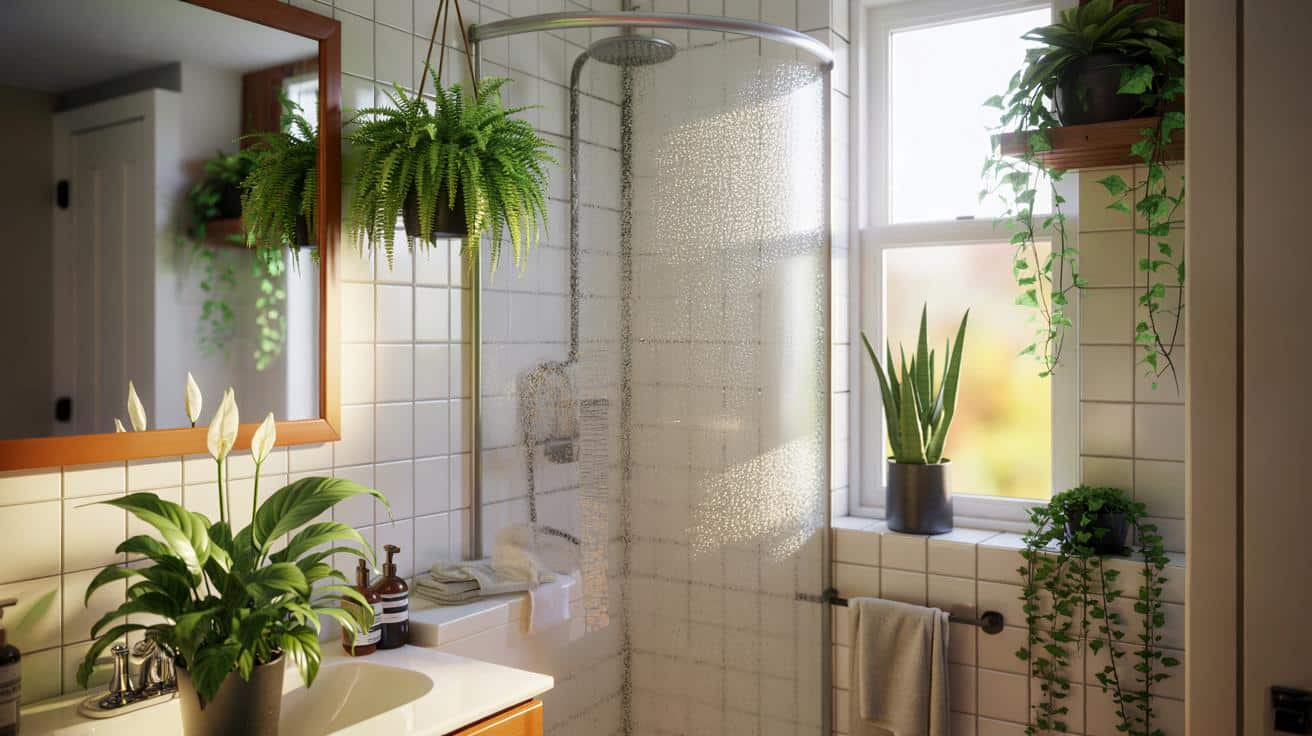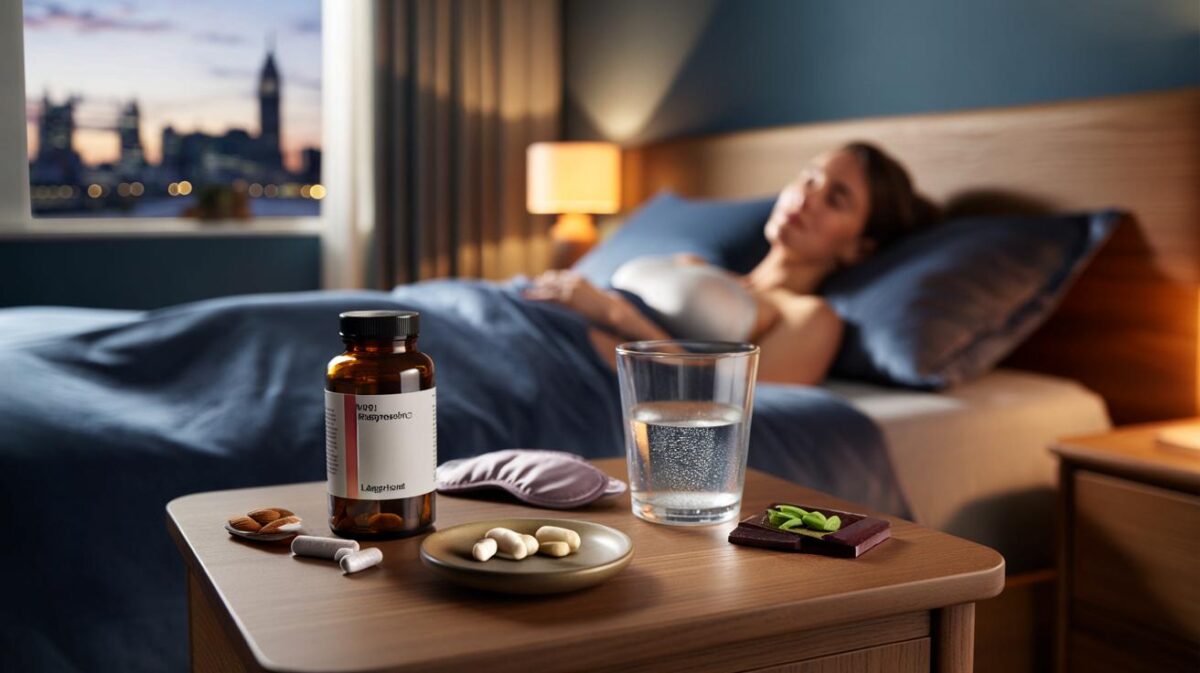This autumn brings a quieter fix.
Across flats and family homes, people are turning to hardy houseplants to tame condensation and stale air without gadgets. The appeal lies in low cost, low effort and a touch of calm green.
Why bathrooms breed fog and funky smells
Warm water meets cool surfaces, moisture condenses and fog blooms across mirrors. Airflow stays poor behind closed doors, so damp lingers. That moisture feeds mould spores, musty odours and bacteria on grout, towels and bathmats.
Cleaning products mask smells, yet many add volatile chemicals to the mix. Electric dehumidifiers do the heavy lifting, but they use power and need emptying. Plants offer another route: they move water through their leaves, take up some pollutants and smooth out small humidity spikes after showers.
Aim for 50–60% relative humidity in a bathroom. Above 65%, mould gains ground and fabrics stay clammy.
The six plants that handle steam and smell
Not all greenery loves the bathroom. Choose species that tolerate shade, enjoy humidity and shrug off temperature swings from hot showers to cooler mornings.
Peace lily (Spathiphyllum)
This shade‑tolerant stalwart thrives in moist air and dim corners. Its broad leaves intercept aerosols and capture particles that carry odours. It wilts to signal thirst, then bounces back after watering. Keep soil lightly moist, not soggy.
Spider plant (Chlorophytum comosum)
Forgiving and fast to multiply, the spider plant copes with low light and intermittent care. It hangs well above the bath, out of splash zones, and helps reduce airborne pollutants from hairspray and cleaners. Water when the top centimetre of soil dries.
Boston fern (Nephrolepis exaltata)
A humidity lover that sips moisture from the air. Fronds trap dust, so a quick rinse under the shower improves performance. It dislikes dry radiators and cold draughts; keep it a metre from windows that open in winter.
Aloe vera
Succulent leaves store water, so it drinks less than most bathroom plants. It handles steam but wants bright, indirect light. Use a gritty mix and a pot with drainage. Water sparingly; too much leads to root rot.
English ivy (Hedera helix)
Happy as a trailing shelf plant, ivy tolerates cool air and helps curb that damp, closed‑up smell. It prefers bright shade and evenly moist soil. Avoid letting it cling to painted walls.
Snake plant (Sansevieria, now Dracaena trifasciata)
Tough as nails and unfazed by missed waterings, the snake plant copes with low light and nightly temperature drops. Thick leaves release moisture slowly and keep the air feeling fresher by steady gas exchange even after lights out.
Group three to five small pots within 50 cm of the shower area. The micro‑canopy boosts local moisture capture after each wash.
Placement that actually works in real homes
Bathrooms vary. Some have a window facing north. Others sit deep in the hallway with only a fan. Match plant to place, and avoid direct splashes and cold blasts from the window.
| Plant | Light level | Humidity tolerance | Care frequency | Pet safety |
|---|---|---|---|---|
| Peace lily | Low to medium | High | Weekly check | Not safe if chewed |
| Spider plant | Low to bright indirect | Medium to high | Weekly check | Generally safe |
| Boston fern | Low to medium | High | Twice weekly glance | Generally safe |
| Aloe vera | Bright indirect | Medium | Fortnightly in cool months | Not safe if chewed |
| English ivy | Medium | Medium to high | Weekly check | Not safe if chewed |
| Snake plant | Low to medium | Medium | Fortnightly in cool months | Not safe if chewed |
A two‑minute weekly routine
Once the plants sit in the right spots, you only need a light touch to keep benefits rolling.
- Water lightly after you shower, not before, to avoid soggy roots in already humid air.
- Tip out saucers so no water stands under pots for more than 15 minutes.
- Wipe or rinse leaves monthly to clear dust and boost gas exchange.
- Rotate pots a quarter turn each week for even growth in low light.
- Open the window or run the fan for 10 minutes post‑shower to reset humidity.
- Use peat‑free, well‑draining compost; mix in perlite for aloe and snake plant.
If leaves yellow from the base, reduce watering. If tips crisp, shift the pot away from a heater or add a pebble tray.
How much difference can you expect?
Plants will not replace a strong extractor fan, but they smooth edges. In a 4 m² bathroom with poor airflow, a cluster of five medium plants can trim post‑shower humidity peaks by 5–10 percentage points within 20–30 minutes. That smaller peak means mirrors clear faster and towels dry sooner. Air smells cleaner because leaves trap aerosols and some volatile compounds from shampoo, bleach and nail varnish remover.
Costs stay low. A basic set of six plants and simple pots runs £30–£60. Electricity use: zero. Compare that to a 200 W dehumidifier at one hour a day for a month, roughly 6 kWh. Plants and a fan together form a solid, quiet combination.
Set‑up tips for renters and busy households
No‑drill, no‑mess ideas
Use tension rods for hanging spider plants. Add a tiered corner stand to lift ferns out of splash zones. Place aloe and snake plant on the brightest sill, a hand’s width back from the glass to avoid winter chill.
Towels and textiles
Swap fluffy mats for quick‑dry microfibre and hang towels spaced at least a handspan apart. Plants remove some moisture, yet fabric spacing does more for drying time than any single species can.
Risks, limits and smart add‑ons
Some of these plants are toxic if chewed by cats or dogs. If pets roam the bathroom, favour spider plants and Boston ferns, or keep other species high and out of reach. Check for fungus gnats if soil stays wet; a layer of fine gravel and less water breaks their cycle.
If paint peels or mould streaks persist, check ventilation. A timer switch that runs the fan for ten extra minutes after lights out often solves the underlying problem. For windows without trickle vents, a small gap during daytime helps reset humidity. Where a shower lacks an extractor, a compact, low‑wattage dehumidifier used during winter mornings pairs well with plants.
Think layers: brief ventilation after each shower, a small cluster of humidity‑loving plants, and textiles that dry fast.
A quick starter bundle for this week
Pick one peace lily as the anchor plant. Add a Boston fern for humidity spikes and a spider plant to hang above the bath. Place a snake plant near the door to handle lower light. If you have a bright sill, tuck in an aloe. Total: five plants, five minutes to arrange, and a bathroom that smells fresher by next week’s laundry day.
For the numbers‑minded, track progress with a cheap digital hygrometer. Note peak humidity after a hot shower today. Add your plants and repeat the reading after seven and 14 days. If peaks still sit above 70%, increase ventilation time or add one more fern. This simple loop turns guesswork into a tidy, low‑effort routine that keeps mirrors clear and mornings calmer.








